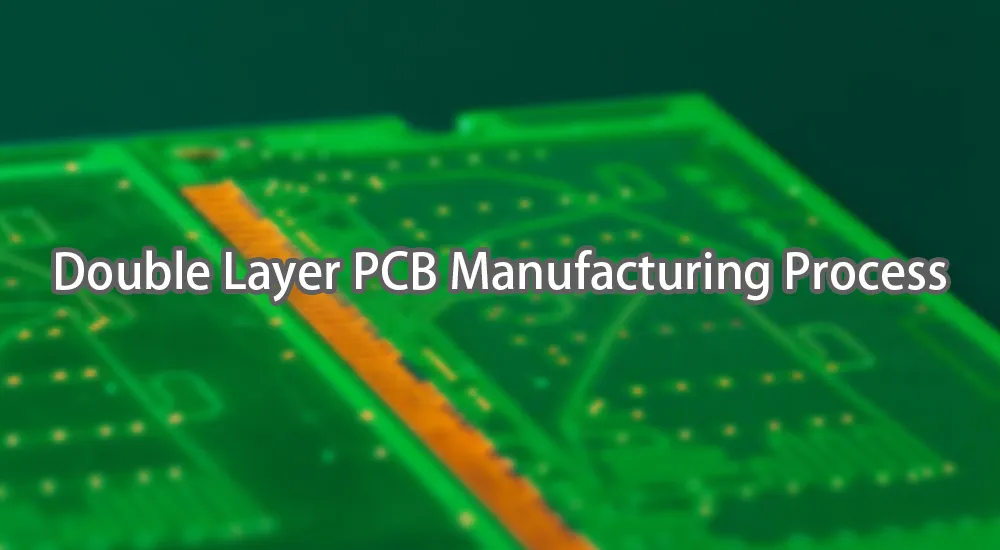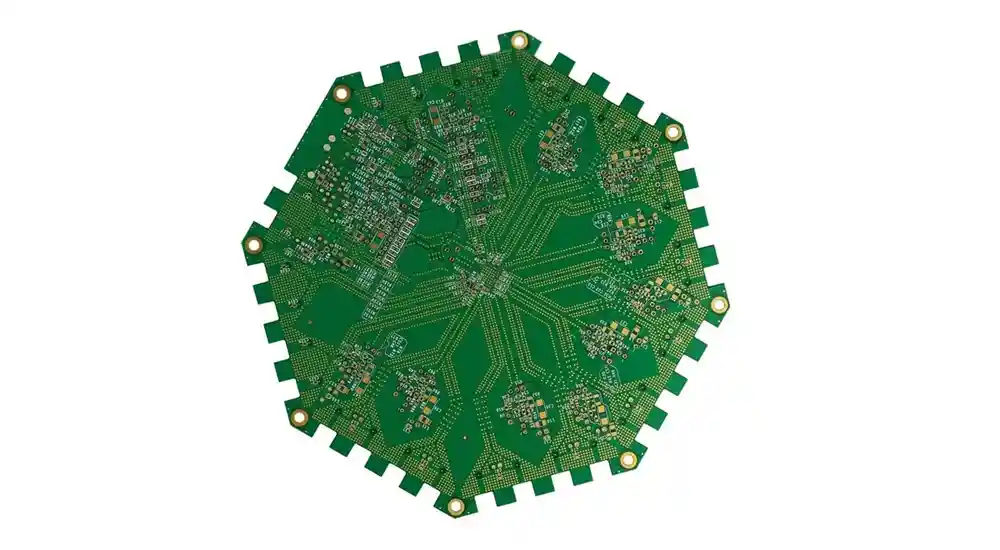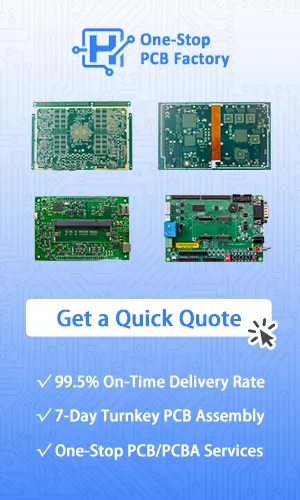
For engineers, procurement professionals, and product developers seeking the best solutions for their electronic systems, understanding the complexities of double-layer PCB production is crucial. The process involves a careful integration of various specialized techniques, starting from substrate preparation and continuing through to final quality verification.
Design and Preparation Phase
Gerber File Generation and Design Rule Check
The manufacturing process for double layer PCBs starts with the creation of comprehensive design files. Engineers generate Gerber files, which define the copper traces, drill patterns, and solder mask specifications for both the top and bottom layers. These files undergo strict design rule checks to ensure manufacturability and compliance with industry standards such as IPC-2221 and IPC-2222.
Key design considerations for manufacturability include the minimum trace width and spacing, via size, and copper pour strategies. Additionally, the design phase specifies the layer stackup configuration, detailing the core material thickness, copper weight, and dielectric properties needed to achieve optimal electrical performance.
Material Selection and Procurement
The choice of substrate material plays a critical role in the electrical performance and reliability of the final product. Common materials used in double layer PCB manufacturing include:
| Material Type | Dielectric Constant | Operating Temperature | Applications |
|---|---|---|---|
| FR-4 Standard | 4.2-4.5 | -40°C to +130°C | General purpose electronics |
| High-Tg FR-4 | 4.1-4.3 | -55°C to +170°C | Automotive, industrial |
| Rogers RO4000 | 3.38-3.48 | -55°C to +200°C | High-frequency applications |
| Polyimide | 3.4-3.6 | -269°C to +400°C | Flexible and extreme environments |
Substrate Preparation and Layer Stackup
Core Material Processing
The double layer PCB manufacturing process begins with a core-based construction, where the base substrate provides both mechanical stability and electrical insulation between the copper layers. The core material, typically fiberglass-reinforced epoxy resin, undergoes surface preparation through controlled roughening to improve copper adhesion.
Surface treatments such as mechanical brushing and chemical micro-etching optimize the surface topology, ensuring effective copper deposition. The prepared substrate maintains a consistent thickness tolerance, typically within ±10% of the nominal specification, ensuring predictable electrical performance throughout the manufacturing process.
Copper Foil Lamination
Copper foil lamination is a critical step in forming the conductive layers for circuit creation. During this process, copper foil is applied to both sides of the prepared substrate under controlled temperature and pressure conditions. Typical lamination parameters are as follows:
- Temperature: 170°C to 180°C
- Pressure: 300-400 PSI
- Duration: 60-90 minutes
- Atmosphere: Vacuum or nitrogen environment
This lamination process creates a permanent bond between the copper and the substrate, laying the foundation for the subsequent creation of the circuit pattern. Quality control during this phase includes adhesion testing and copper thickness verification to ensure consistent and reliable layer formation.

Circuit Pattern Creation and Etching
Photoresist Application and Exposure
The creation of circuit patterns in double layer PCB manufacturing uses photolithographic techniques for precise trace definition. Dry film photoresist is applied to ensure uniform coverage across both copper surfaces, with a typical thickness range of 25 to 75 micrometers, depending on the resolution and etching selectivity required.
During the photoresist exposure process, UV light with wavelengths between 350-400 nanometers is used to selectively polymerize the resist material according to the circuit pattern. Advanced facilities often employ laser direct imaging systems for greater accuracy and faster setup times compared to traditional contact printing methods.
Chemical Etching Process
The etching phase removes unwanted copper to form the final circuit patterns on both layers simultaneously. Cupric chloride or ferric chloride etchants are typically used in double layer PCB manufacturing, with each offering distinct advantages for different production needs.
Etching parameters must be carefully controlled to ensure consistent results:
- Etchant concentration: 38-42° Baumé for cupric chloride
- Temperature: 45-55°C
- Spray pressure: 15-25 PSI
- Conveyor speed: Adjusted for complete copper removal
Pattern Inspection and Verification
After etching, automated optical inspection systems are used to verify the accuracy of the patterns and detect any defects, such as shorts, opens, or dimensional variations. This quality control step ensures that both layers meet design specifications before proceeding to via formation.
Via Formation and Plating Process
Mechanical Drilling Operations
Via formation in double layer PCB manufacturing requires precise drilling to create reliable electrical connections between the top and bottom copper layers. Computer-controlled drilling machines use carbide or diamond-coated drill bits, with diameters typically ranging from 0.1mm to 6.35mm, depending on the design specifications.
Drilling parameters are carefully optimized to minimize hole wall roughness and prevent delamination:
- Spindle speed: 150,000-300,000 RPM for micro vias
- Feed rate: 0.05-0.5mm per revolution
- Entry and exit materials: Aluminum or phenolic backing
- Coolant system: Air blast or mist cooling
Hole Cleaning and Preparation
Post-drilling cleaning removes any debris and prepares the hole walls for the subsequent plating process. The cleaning procedure involves a series of treatments, including desmear removal, permanganate etching, and neutralization, to ensure optimal copper adhesion within the vias.
Electroplating Process
The electroplating phase deposits copper into the drilled vias to establish electrical continuity between layers. This process requires precise control of current density and solution chemistry to ensure uniform copper distribution throughout the via barrel.
Plating specifications for double layer PCBs include:
- Minimum copper thickness: 25 micrometers (1 mil)
- Current density: 15-30 ASF (Amps per Square Foot)
- Plating time: 45-90 minutes, depending on the required thickness
- Solution temperature: 18-25°C for optimal throwing power
Final Assembly and Quality Control
Solder Mask Application
The solder mask application protects the copper traces and defines the solderable areas for component attachment. In double layer PCB manufacturing, the solder mask is applied to both sides simultaneously using screen printing or curtain coating methods. UV exposure through photomasks defines the final solder mask pattern, with typical opening accuracy of ±0.05mm.
Surface Finishing Options
Surface finishing protects exposed copper and enhances solderability for component assembly. Common surface finishing options for double layer PCBs include:
- HASL (Hot Air Solder Leveling): Cost-effective and suitable for through-hole components
- ENIG (Electroless Nickel Immersion Gold): Provides a flat surface, ideal for fine-pitch components
- OSP (Organic Solderability Preservative): Environmentally friendly and suitable for multiple reflow processes
- Immersion Silver: Offers excellent electrical performance and serves as a cost-effective alternative to ENIG
Electrical Testing and Verification
Comprehensive electrical testing ensures the manufacturing quality and confirms compliance with design specifications. In-circuit testing checks the connectivity between all designed connections while identifying potential manufacturing defects. Flying probe testing systems offer flexible testing capabilities for prototypes and low-volume production runs.
The final quality control phase includes dimensional verification, visual inspection, and electrical characterization to confirm that the completed double layer PCB meets all design and performance requirements.
Advanced Manufacturing Considerations
Process Control and Optimization
Modern double layer PCB manufacturing facilities utilize statistical process control techniques to ensure consistent quality and optimal yield performance. Real-time monitoring systems track critical parameters throughout each stage of production, enabling immediate adjustments to prevent deviations that could affect product quality.
Environmental controls are maintained to ensure stable temperature and humidity conditions, which are essential for photolithographic processes and material handling. Clean room environments are also used to prevent contamination that could compromise the integrity or reliability of the circuits.
Industry Standards and Compliance
Double layer PCB manufacturing processes comply with international standards such as IPC-A-600 for acceptability criteria and IPC-6012 for qualification and performance specifications. Adhering to these standards ensures consistent quality across different manufacturing facilities and establishes clear guidelines for product acceptance.
Partner with Haoyue Electronics for Superior Double Layer PCB Manufacturing
At Haoyue Electronics, we combine advanced manufacturing capabilities with rigorous quality control to deliver exceptional double layer PCBs for demanding applications. Our state-of-the-art facility uses the latest process technologies and testing equipment to ensure your products meet the highest industry standards.
Our experienced engineering team provides comprehensive design-for-manufacturability support, helping optimize your designs for cost-effective production while maintaining superior performance. From prototype development through to high-volume manufacturing, we offer reliable solutions that accelerate your product development timeline.
Contact our technical specialists today to discuss your double layer PCB requirements and explore how our manufacturing expertise can contribute to the success of your next project.
FAQ
1. What is the difference between single layer and double layer PCBs?
The main difference lies in the number of conductive copper layers. Single layer PCBs have one copper layer on one side of the substrate, while double layer PCBs have copper layers on both sides. This allows double layer PCBs to support more complex circuits and higher density designs.
2. What are the advantages of double layer PCBs over single layer PCBs?
Double layer PCBs offer increased circuit density, improved design flexibility, and the ability to route signals on both sides of the board. They also help reduce the size of the circuit, making them ideal for compact electronic devices with high-performance requirements.
3. What materials are commonly used for double layer PCB manufacturing?
Common materials used for double layer PCB manufacturing include FR-4 (fiberglass-reinforced epoxy resin), High-Tg FR-4 for higher temperature applications, and materials like Rogers RO4000 for high-frequency applications. Material selection depends on the required electrical properties and the end application’s needs.
4. How does the electroplating process work in double layer PCB manufacturing?
Electroplating involves depositing a thin layer of copper inside the drilled vias to create electrical continuity between the top and bottom copper layers. This process ensures that signals and power are properly routed through the PCB, creating reliable connections between different layers.
5. How can I ensure my double layer PCBs meet the required quality standards?
At Haoyue Electronics, we follow strict quality control procedures throughout the manufacturing process, including in-circuit testing, dimensional verification, visual inspection, and automated optical inspection. Our PCBs comply with international standards such as IPC-A-600 and IPC-6012, ensuring consistent performance and reliability.

